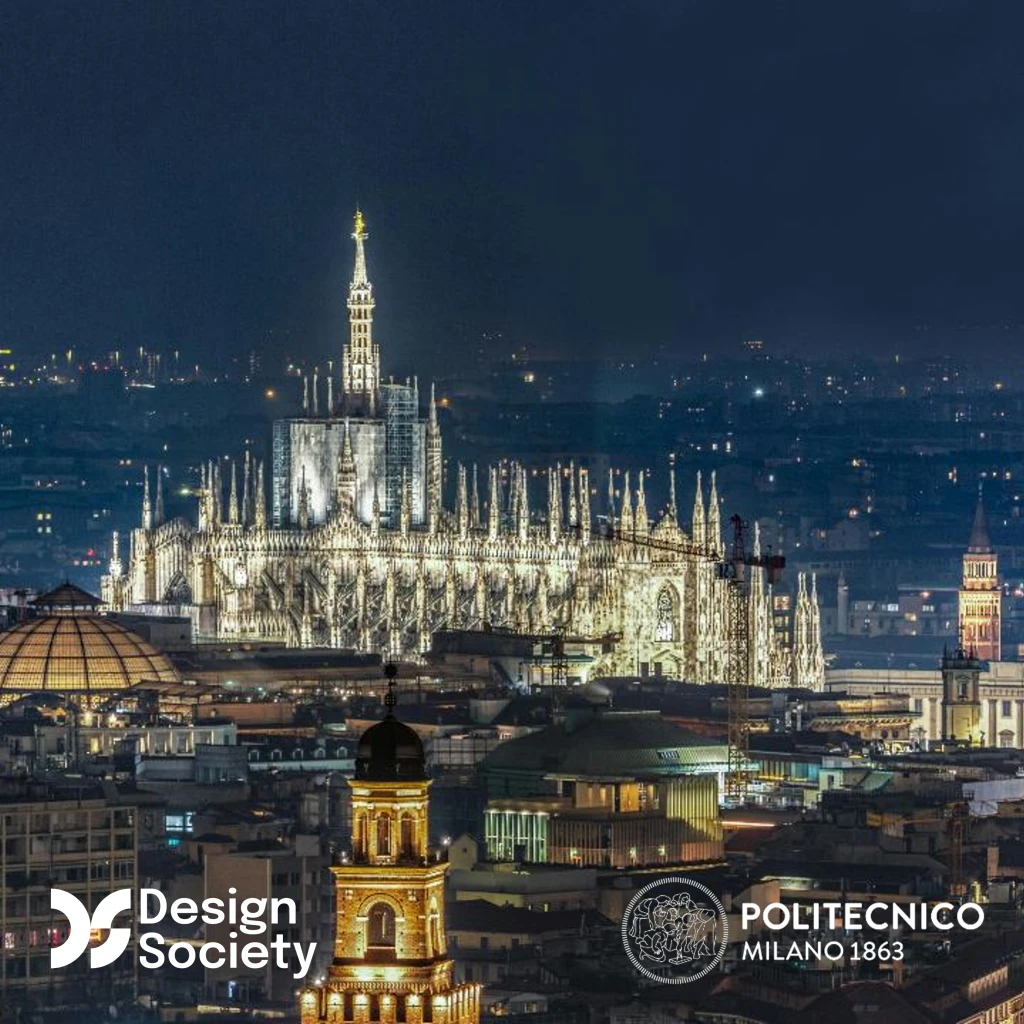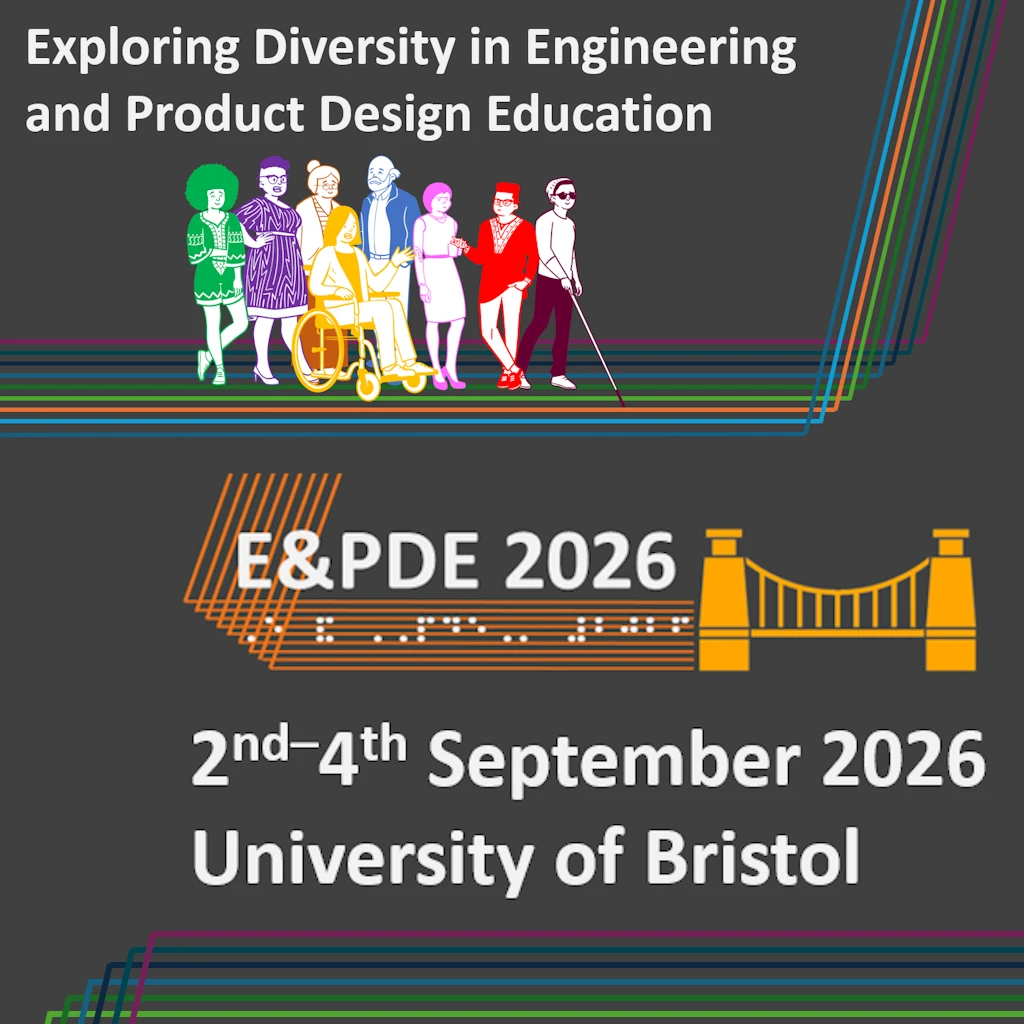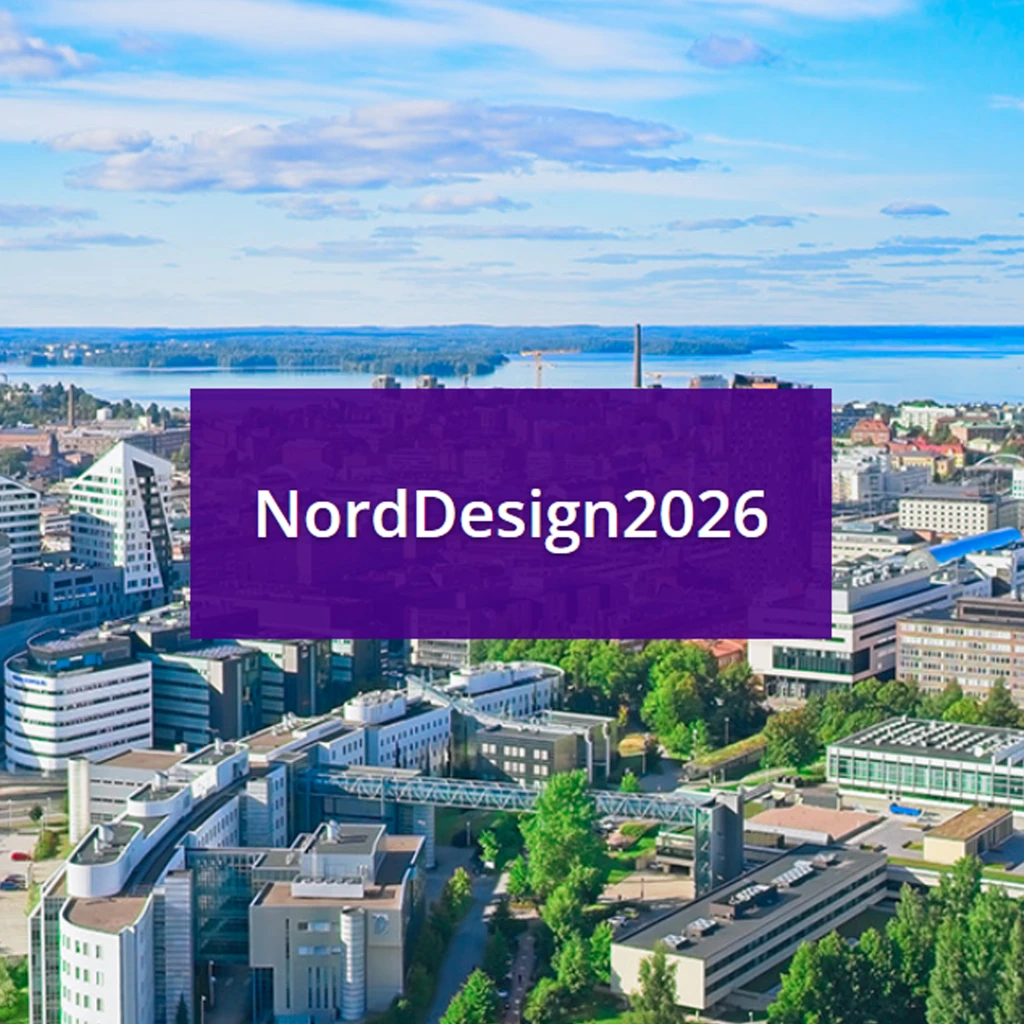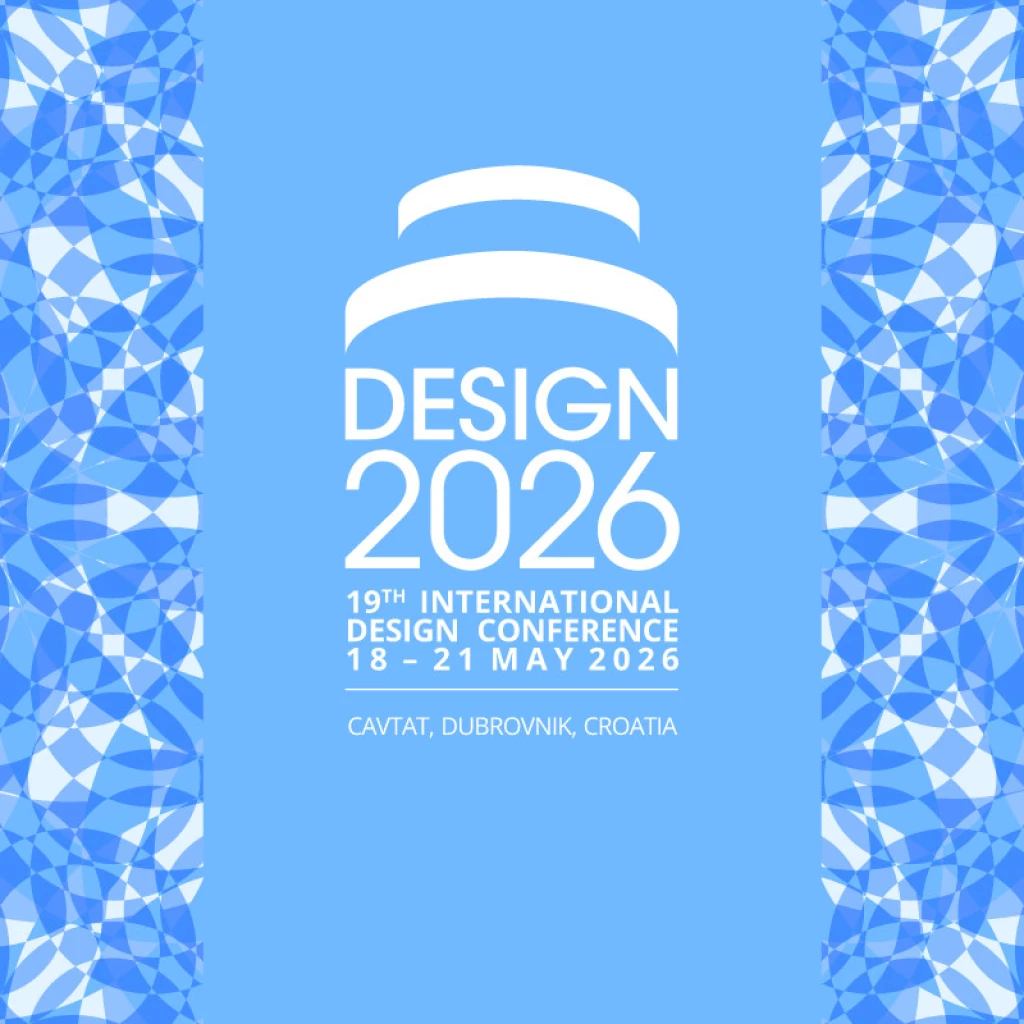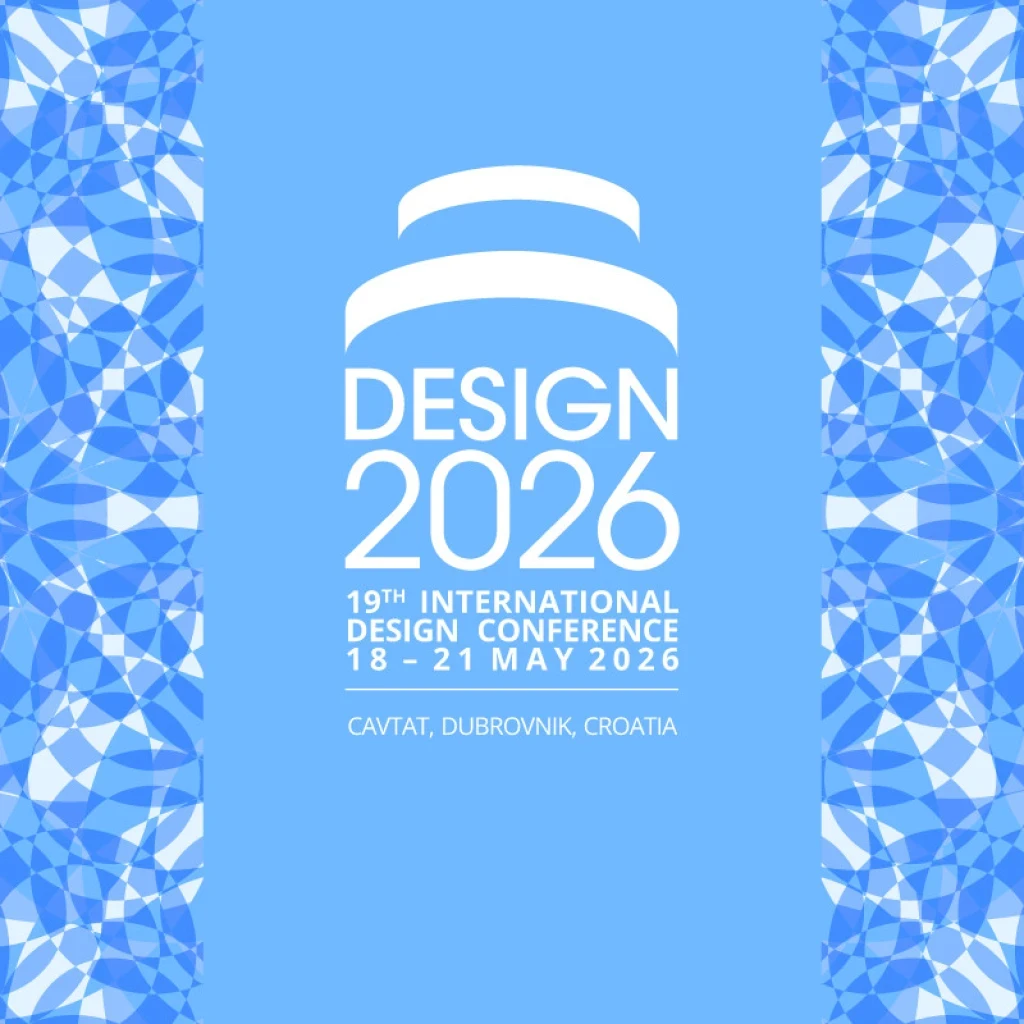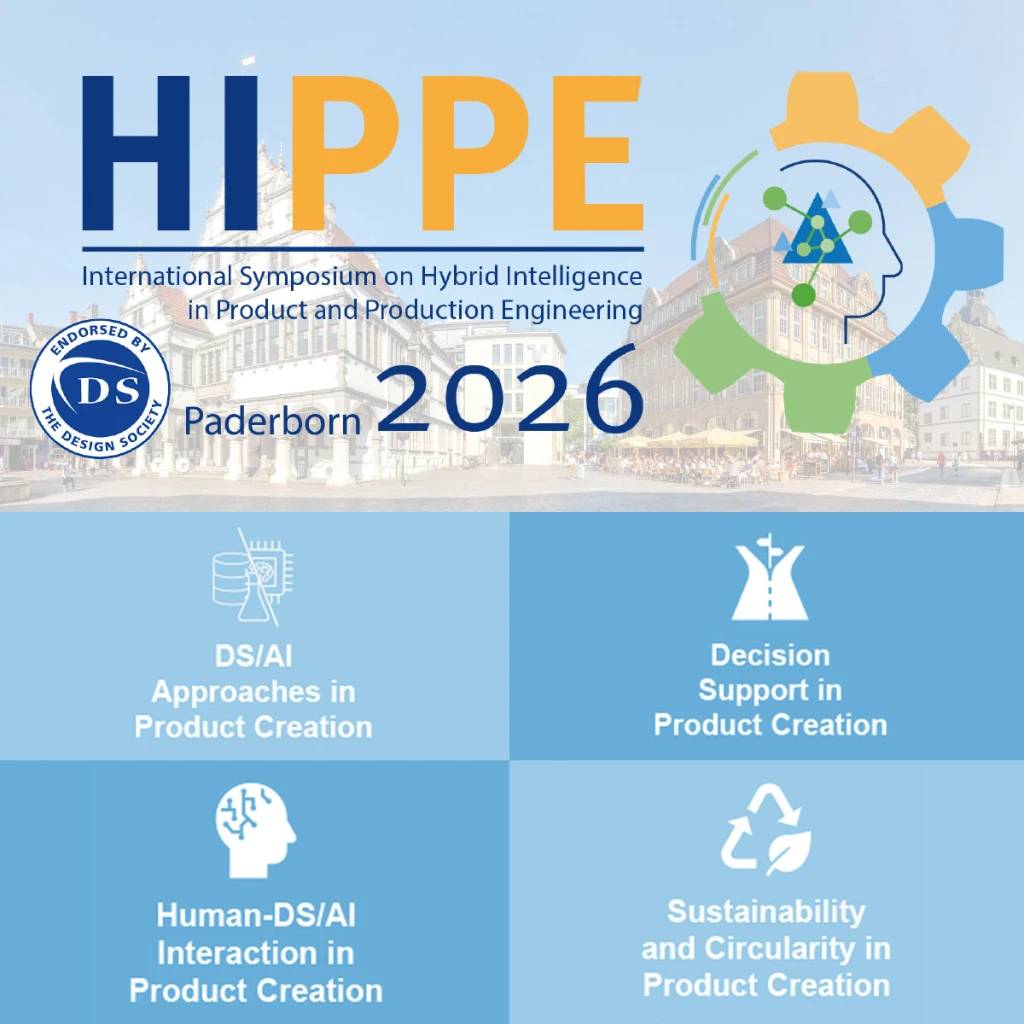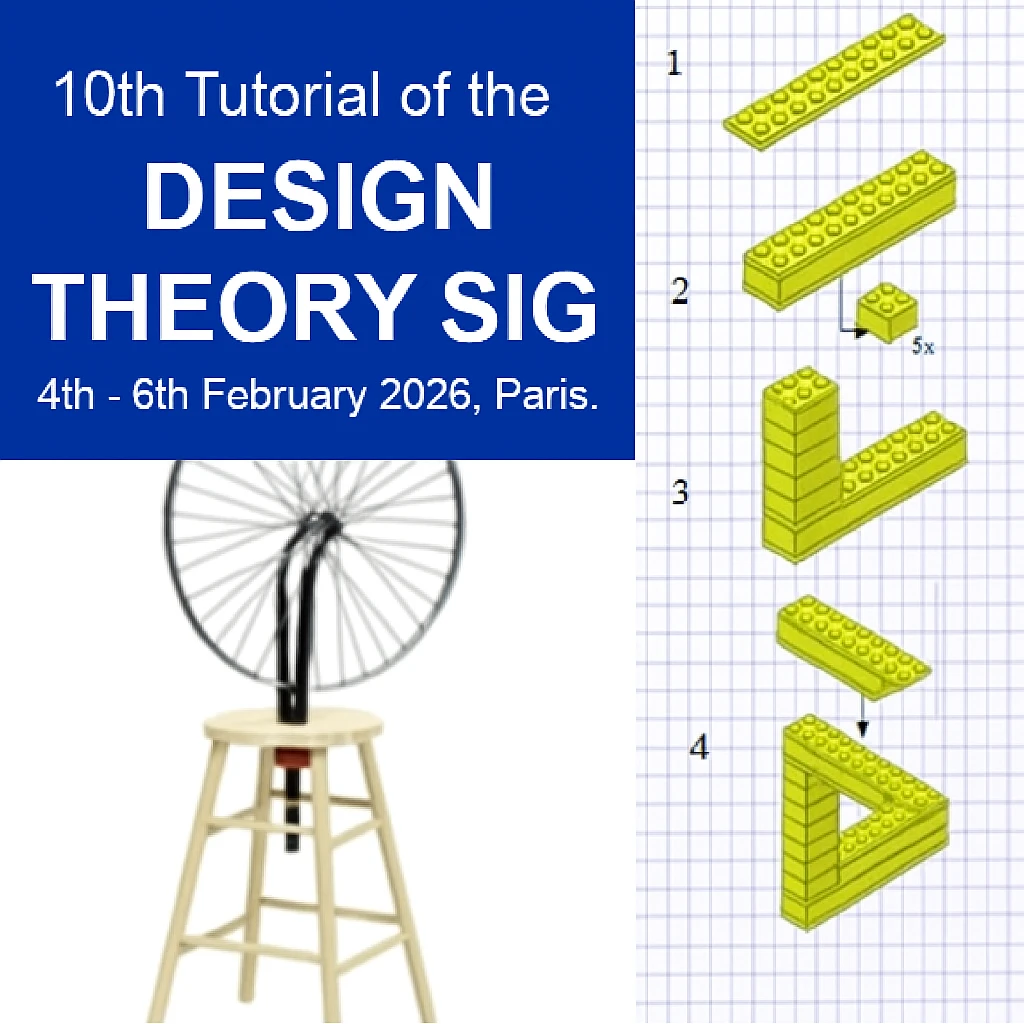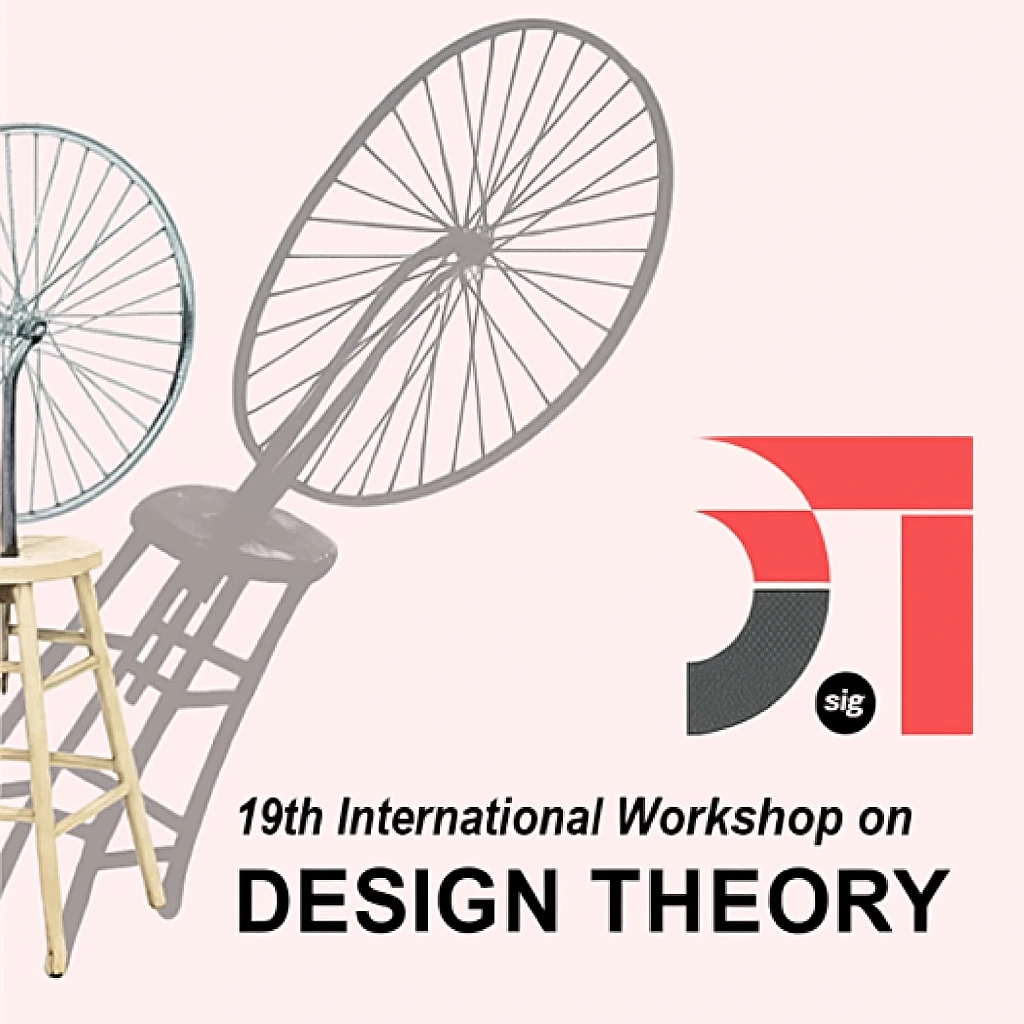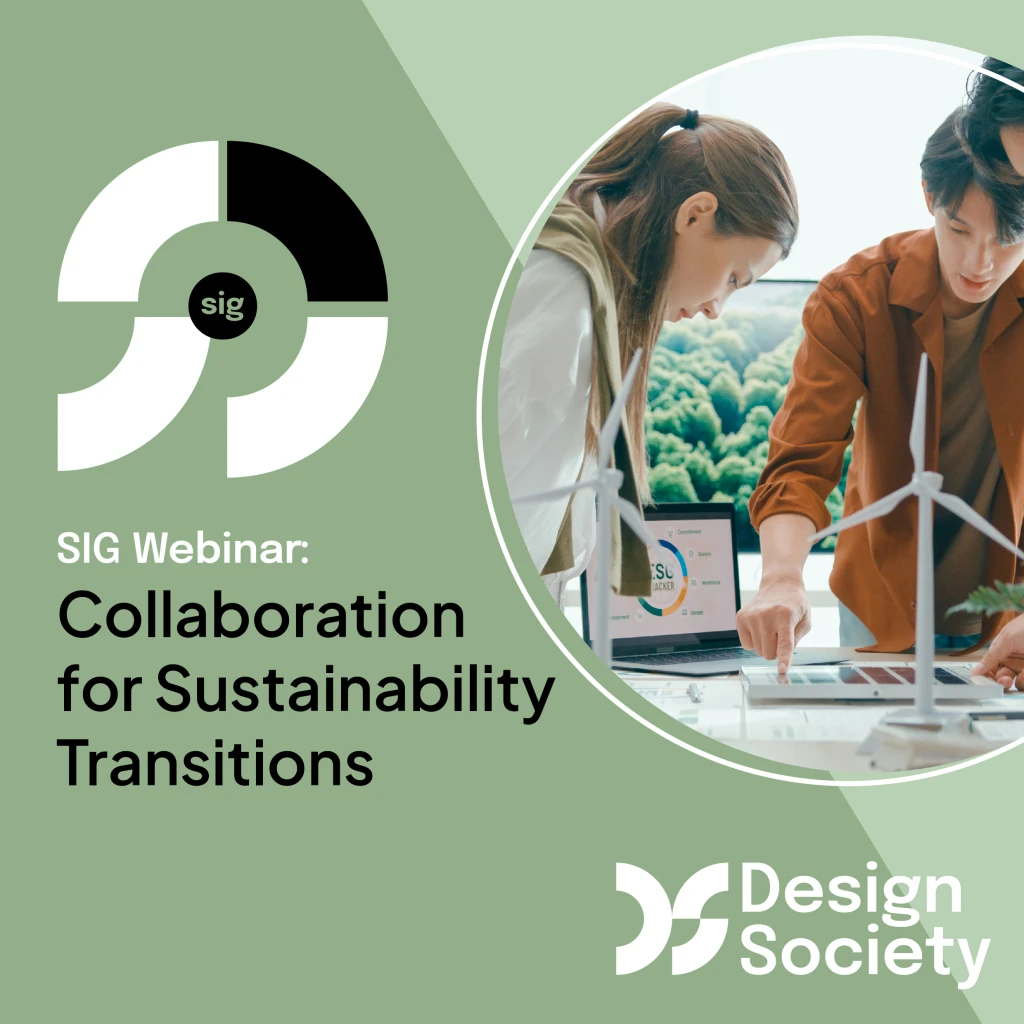IASDR 2021: [ _ ] WITH DESIGN: REINVENTING DESIGN MODES
5th - 9th December 2021, Hong Kong
Registration now open: visit iasdr2021.org
IASDR 2021 is the ninth Congress of the International Association of Societies of Design Research. The overarching theme of IASDR 2021 is ‘[ _ ] With Design: Reinventing Design Modes’. Design finds itself at a critical moment where the conventional ‘modes’ of doing, thinking and application are increasingly challenged by the troubled ideology of globalization, climate changes, migration patterns and rapid restructuring of locally driven manufacturing sectors. In addition, the wider call for design to become more open and more cross- and trans-disciplinary has further blurred boundaries between disciplinary and knowledge domains, challenging both design discourses and designers to steer praxis and thinking across unchartered territory for the sake of innovation and advancing research. In combination with the environmental, cultural, technological, and, crucially, pandemic transitions, the call heeds for design at large to fundamentally alter its modes of practice. Beyond the conventional models of conducting research, or developing solutions to ‘wicked’ problems, the recoupling of design with different modes should be seen as an expression to embrace other capacities of thinking, criticisms and productions. The coupling of DESIGN with SOCIAL, MAKING, BUSINESS, CRITICAL, HISTORICAL/PROJECTIVE, IMPACT, PANDEMIC and ALTERNATIVE MODES necessitates the rescripting of all aptitudes and practices. ‘[ _ ] With Design: Reinventing Design Modes’ encourages design researchers to discuss, elaborate and investigate emerging modes of design research that transcend disciplines in order to serve a multitude of goals and scales. This overarching theme wishes to solicit the definition of new frameworks, models, methods, products and unexpected outcomes in this questioning of design futures.
IASDR 2021 and Hong Kong
This is the second time the conference is hosted in Hong Kong, after a 14 years’ interval. Hong Kong represents the amalgamation of socio-economic diversity informed by an east meets west legacy as a design locale. The Special Administration Region of Hong Kong is described as one of the truly and uniquely modern ‘Market Cities’. The hosting School of Design of The Hong Kong Polytechnic University as a driving force brings out Chinese design research potential to international arena, allowing for the cross-fertilization of research agendas and expertise to impact design and its research futures.
IASDR Conference Format
In the ever-changing global pandemic context of 2021, the conference is prepared to be hosted either in hybrid or online format, a decision to be made by the IASDR Board at a later time. More information will be made available in due course.
IASDR 2021 participation formats include full and short papers, pictorials, designed objects, workshops and panel discussions, as well as graduate consortium.
‘[ _ ] DESIGN’ THEMATIC OUTLINES
[SOCIAL] DESIGN MODES
Keywords: Social design, Service design, Social innovation, Social transformation, Communities of practice.
The SOCIAL-DESIGN MODES theme aims to rethink the way design links with socio-technological transformations, and behavioural change. The emergence of social media and the networked society, for instance, is generating transformations in the dynamic interactions of people, practices and artifacts, impacting human relationships, the man-made environment, cultural and service systems and social sustainability. How do we approach these fields and potential sub-domains that re-define and reposition design approaches, outline new concepts and methodologies, generate ethical frameworks and values, initiate new forms of knowledge, extend collaborative processes and develop communities of practice? What are the emerging design-social complexities and constellations that foster social innovation, new social forms, social design and social sustainability? How and in what combinations can research and praxis address the merger of design —as a tool, a practice and/or a vision— with the ‘social’, in its transformative capacity to respond to pressing social questions?
[MAKING] DESIGN MODES
Keywords: Technology, Explicitand tacit knowledge, Distribution vectors, State of the Art.
The MAKING-DESIGN MODES theme facilitates ‘thinking through making’ as a mode of material practice. In what way do the capacities of design alter in the context where new methodologies of making and production are combined with technical and scientific data sets? Antedating the ‘maker movement,’relationships between making and design structured translations of explicit knowledge from technology and engineering into tacit knowledge-driven practice as a distribution of the ‘state of the art.’ This distribution is evidently changing through new and more effective communication networks, agent practices, and materialization nodes as vectors. How do these vectors contribute to technological distribution and what is their stock in trade? Compared to 20th Century distribution vectors, how do their priorities and biases differ? How do these biases relate to technological distribution and how do they effect relationships between technology and society?
[BUSINESS] DESIGN MODES
Keywords: Design thinking, Transformation, Value creation, Design-driven entrepreneurship, Transdisciplinary.
The BUSINESS-DESIGN MODES theme wishes to look into the relationships between design research and business, economies and their circular or linear structures. Over the last two decades design literature has investigated the relationships and patterns of different design modes in business. This in itself has devoted attention to tackling the ‘design-heterogeneity’ in response to critical and emerging business issues related to opportunity identification, problem-solving, and solution-seeking modes. This further questions:how does design become responsive to the modes of business and the dominant economic paradigm? This theme is necessarily broad to help illuminate the firm-specific factors which play into the design behaviours, structures, and economic paradigm. Contributions are open to academia and practice-based inquiries, and along the following interpretations of mindsets, measures and case studies may encompass: design as a structure for innovation, design as a market-orientation, design as a strategic asset and design as alternative ways of thinking, acting, and doing business, e.g.life-centric.
[CRITICAL] DESIGN MODES
Keywords: Cross-over, Hybridity, Interplay, Appropriation, Disruption, Discourse.
The CRITICAL-DESIGN MODES theme wishes to critically engage with the notion of ‘Design.’All established disciplines inherently depend on particular knowledge bases and mechanisms for their subject-coherent development performed through codes, categorisations, preconstructed modules, and standardised rules and formulas.In Design those commonly evolve around considerations of functionality, materiality, technology, applicability and others. We are looking to challenge the un-/subconscious social norms and assumptions prevalent in the professional and educational conventions of Design. We may speculate on the effects that changing cultural, technological, and scientific contexts may have on Design practices.Ultimately, this theme is interested in exploring how alternative/external knowledge systems, theories and practices, notions and perspectives may critically inform design positions and practices. How may Design’s ‘disciplinary subjectivity’ be critically questioned, opened and potentially remodelled through approaches and methodologies beyond its common sources? How may such ‘cross-fertilisation’ affect properties originally inherent to the design field, like its values?
[HISTORICAL / PROJECTIVE] DESIGN MODES
Keywords: Design, Colonialism, Heritage preservation, History, Future, Vernacular.
The theme of HISTORICAL / PROJECTIVE-DESIGN MODES aims to explore how historical, colonial, and heritage perspectives alter design’s future modes and challenge the dominant modes of framing the meaning and scope of design as a largely Anglo-European practice. The recent emergence of new historical frameworks has both directly and indirectly challenged the interpretation of legacies and practices of design. This theme welcomes contribution from scholars and practitioners concerned with how the past and future of design is implicated in the complexity of ecological devastation, racial and political tension, coloniality, technological futures, and the dominate of contemporary Western culture. Contributors are encouraged to scrutinize how traditional, cultural values and vernacular design impact the dissemination and reprocessing of design modes and how design capacities will develop in the age of globalization.
[IMPACT] DESIGN MODES
Keywords: Design, Design research, Design impact, Social transformation, Critical reflection
The role of design in society, industry and business has been changing and evolving into one that deals with ‘problem solving’ and ‘problem finding.’ Nowadays, designers and design researchers contribute, in a more impactful role, to innovation, decision-making and strategic planning in organizations. Design research is featured as a powerful tool to address the real-world approaches and processes, explore theoretical questions in context, and derive research findings from formative evaluations. Instead of serving at the end-point, the emergence of design as an impactful factor has the potential to influence a wider and deeper range of activities, changes and transformations. How can designers increase impact in terms of research and how is this demonstrated to a wider field of research and making? The IMPACT-DESIGN MODES theme invites research projects, case studies, critical reflections upon the topics under ‘Impact of Design, ’such as the definition of impact in design research and how design impact is assessed.
[PANDEMIC] DESIGN MODES
Keywords: COVID19-design, Pandemic design, Design response, Process modifications.
Over the last twelve months, the effects of the COVID 19 pandemic have changed both the approach and praxis of design. 'Design as a response', 'design as a protective mechanism', 'design as a praxis against future pandemic challenges' has brought to the fore a range of questions centred on health, society, predictability and impact of design in a pandemic setting. The PANDEMIC-DESIGN MODES theme wishes to explore how design responds to the context of the COVID 19 pandemic, as social framework, as critical position, as new computational model or as new emergent streams of research. Moreover, what are other unforeseen outcomes when the pandemic enforced into the variety of design domains as both challenges but also as new opportunities?
[ALTERNATIVE] DESIGN MODES
Keywords: Design thinking, Thinking through design, Transdisciplinary design, Design capacity, next design scenario.
What unconventional and alternative modes of design thinking emerge when we frame our thoughts in other terms? Combination, mergers and transformation of design and thinking can lead to innovation if approached from a new perspective, but what is that perspective? What will be ‘new’ or ‘other’ design modes that could stimulate debates on next design scenarios and future challenges? This alternative mode of design thinking may refer to fundamental viewpoints and reflections that embrace our action of mind. The ALTERNATIVE-DESIGN MODES theme invites contributions to explore both thinking ‘through design’ and impact that design holds with its transference into other terms that challenge underlying assumptions (e.g., human-centred) or are expressed through other capacities (e.g., AI for design). With this theme, we wish to open key debates on design thinking and intangible activities to envision future design scenarios. These scenarios can be applied to artefacts, services, systems, procedures or even situations.
PARTICIPATION FORMATS
PAPERS
IASDR 2021 invites authors to submit papers reporting research in varied areas related to design. The conference paper swill be submitted to a selected thematic area, where reviews are organized by their respective subcommittees. Authors are advised to refer to one of the eight themes [SOCIAL] DESIGN MODES, [MAKING] DESIGN MODES, [BUSINESS] DESIGN MODES, [BUSINESS] DESIGN MODES, [CRITICAL] DESIGN MODES, [HISTORICAL / PROJECTIVE] DESIGN MODES, [IMPACT] DESIGN MODES, [PANDEMIC] DESIGN MODES and [ALTERNATIVE] DESIGN MODES.
Full papers should be 4000-6000 words (excluding abstract and references) and short papers 2000-2500 words (excluding abstract and references). All submissions will be double blind peer reviewed. For details of paper submission and templates, please go to Papers.
PICTORIALS
For the first time IASDR 2021 will include Pictorials as a participation format. Pictorial contributions are invited to explore the various IASDR2021 thematic outlines following broad angles of interpretation. Pictorials are fully credited research papers in which the visual components are the primary means of conveying information. Pictorials are a fully accredited part of the programme, and will follow the same protocols of Full Papers, in terms of production, reviewing protocols, archival, presentations and institutional reporting.
Pictorials may include field notes, photographs, annotated photographs, illustrations, renderings, sketches, artwork, collages, diagrams, renderings and sketches, and other visual forms. The pictorials format encourages multiple perspectives on knowledge production, sharing, and representation. Many approaches are possible. Pictorials must demonstrate original work, working within the academic standards of citing and using work of others. Pictorials must also build on work of others to extend and open new directions of enquiry.
For details of Pictorial submission and templates, please go to Pictorials.
DESIGNED OBJECTS
The definition of what constitutes a “designed object” is to put emphasis on the act of design.
A short Google search of “design object” reveals mostly software related ideas regarding object-oriented design of data fragments being collided and connected to form larger systems and applications conducted in iterative and increment always. Thus, it is a rather functional and systemic way of looking at design.
Int he field of design, while James Dyson focuses on the modern aspect of design states that “Design means how something works, not how it looks…”, Ron Arad defines design as “… the act of imposing one’s will on materials to perform function.” Both are as much oppositional to the Google search as to the liberal view ofNick Crosbie that “Design is about creatively exploiting constraint.” Thus, referring to John Heskett, in Design: A Very Short Introduction (OxfordUniversity Press, 2005), design, as he notes, grammatically correct, yet somewhat audaciously is, “… to design a design to produce a design.”
To integrate the existing notion of design objects that seems confusing and antithetical to the deterministic credos of well-known designers, we propose instead the term “designed objects” to get better aligned with the accepted view of designers on what a designed object might be. In doing so we are looking for design, in which the designed object is situated between being systemic functional and notional poetic. The conception of these objects is at the same time an attempt by the designer to define design. We are looking to showcase objects that convey as much about the design itself as they do about the practice of the designer and the state of the discipline today.
For details of submission and template, please go to Designed Objects
GRADUATE CONSORTIUM
The Graduate Consortium of IASDR allows for cross-fertilisation between Doctoral work and emerging Master’s research within any of the eight outlined conference themes.
Doctoral students who wish to participate in this format should submit a short paper to outline their research topic, methods of research and key outcomes for double blind peer review. Accepted authors will be invited to deliver a short talk.
Masters students who wish to participate should submit an abstract to outline their research topic, methods of research and key outcomes. Accepted abstracts will notified in preparation of poster submissions (A1 size).
WORKSHOP PROPOSALS
IASDR 2021 Workshops are a great opportunity for building connections and crossovers between disciplines, communities, education, research and practice to probe key issues, topics and prospects in the eclectic field of design. Within the conference’s eight outlined themes, we solicit invitations to reflect on critical positions in design, revisit historical trajectories of design, reimagine design impacts, and help shape the ‘new normal’ in and beyond the pandemic period.
Foremost, you are encouraged to approach IASDR Workshops as a SAFE PLACE to question ANY of the outlined themes. Express your confusions and concerns, and further explore alternative, emerging, yet-to-articulate modes. For provoking the debate, we would like to start with asking what are modes of design for and why we need them in the first place? Can we ‘unmode’ design research? Can we reinvent design research as ‘mode-less’?
The call for proposals will require submissions in a max 2500 words short paper. For details of paper submission and templates, please go to Workshop Proposals
PANEL PROPOSALS
IASDR Panels provide a unique, interactive method to engage participants and experts in the field in a constructive discussion-oriented forum. Panel presentation is not the same as short talks or paper presentation and does not need to have original research. Panel presentations provide a venue to discuss novel research areas and directions, policies, methods, and opinions among experts in the topics relevant to the conference. Panel members may include experts with different school of thoughts and even controversial ideas for discussion. Panelists are strongly encouraged to propose topics relevant to the conference’s eight thematic areas and attract wide interest among audiences. Panelists have to be expert in their field and use creative methods and their expertise to engage the audiences and the panel members in the panel discussion.
First call for proposals should include (i) background of the topic, (ii) thematic link, (iii) aim of the panel, (iv) possible discussion points. Please include a short bio of each panel member (50-75 words / panel member). Each panel will be allotted a 1.5-hour slot, as part of the conference programme.
Submission details will be available soon.
KEY DATES
- 16 May 2021 (AoE) Submission deadline for Papers, Pictorials, Workshops, and Designed Objects
- 25 July 2021 (AoE) Submission deadline for Consortium Papers/Abstracts, and Panel Proposals
- 2 August 2021 Notification of acceptance for Papers, Pictorials, Designed Objects, and Workshop proposals
- 23 August 2021 Notification of acceptance for Consortium Papers/Abstracts, and Panel Proposals.
- 5–9 December 2021 Main Conference
- 5 December Workshops; Pre-conference ex-curricular activities in connection to the events of Business of Design Week 2021 (BoDW2021).
- 6–8 December Main Conference Programme
- 9 December Graduate Consoritium




